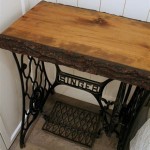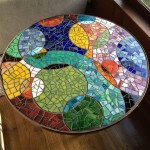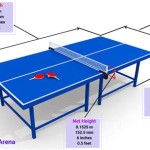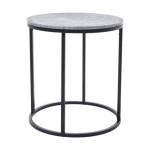Restoring a Concrete Pier Dining Table: A Comprehensive Guide
The Concrete Pier Dining Table, a signature piece from Restoration Hardware, is renowned for its industrial-chic aesthetic and robust construction. Characterized by a substantial concrete tabletop supported by a prominent pier base, this table makes a bold statement in any dining space. However, the inherent nature of concrete, coupled with the daily rigors of dining, can lead to wear and tear over time. This article provides a comprehensive guide to restoring a Concrete Pier Dining Table, covering everything from initial assessment to final sealing, ensuring the table remains a focal point for years to come.
The restoration process begins with a thorough assessment of the table's condition. This involves identifying any existing damage, such as stains, cracks, chips, or general surface wear. Concrete, while durable, is porous and susceptible to staining from spills, especially acidic liquids like wine or citrus juice. Cracks, though often hairline and purely aesthetic, can compromise the table's structural integrity if left unaddressed. Chips, usually occurring along the edges or corners, detract from the table's overall appearance. Understanding the extent and nature of the damage is crucial for determining the appropriate restoration techniques and materials.
Beyond surface damage, the stability of the pier base should also be evaluated. Check for any wobbling or unevenness, which may indicate issues with the base's connection to the tabletop or the levelness of the floor. Addressing these structural concerns is essential before proceeding with any cosmetic repairs to the concrete itself.
Key Point 1: Cleaning and Surface Preparation
Before embarking on any repair work, the table must be thoroughly cleaned to remove any dirt, grime, grease, or existing sealant. This ensures proper adhesion of repair materials and prevents further contamination of the concrete. The cleaning process varies depending on the type and severity of the soiling. For general cleaning, a mild detergent mixed with warm water is usually sufficient. Apply the solution with a soft cloth or sponge, gently scrubbing the surface to loosen any debris. Avoid using abrasive cleaners or scrub brushes, as these can scratch the concrete surface.
For stubborn stains, a specialized concrete cleaner may be necessary. These cleaners are formulated to penetrate the porous concrete and lift out embedded stains without damaging the material. Always follow the manufacturer's instructions carefully when using concrete cleaners, and test the product in an inconspicuous area first to ensure it doesn't discolor or damage the table.
After cleaning, thoroughly rinse the table with clean water to remove any residue from the cleaning solution. Allow the table to dry completely before proceeding to the next step. This drying process can take several hours or even overnight, depending on the ambient humidity and the concrete's porosity.
Once the table is dry, surface preparation is crucial for achieving a seamless repair. This involves lightly sanding the affected areas to create a slightly rough surface, which promotes better adhesion of repair materials. Use a fine-grit sandpaper (220-grit or higher) and sand in a circular motion, feathering the edges of the damaged area to blend it with the surrounding concrete. Be careful not to apply excessive pressure, as this can further damage the surface. After sanding, remove any dust and debris with a tack cloth or vacuum cleaner.
Key Point 2: Repairing Cracks and Chips
Addressing cracks and chips requires the use of a concrete repair compound or epoxy specifically designed for concrete surfaces. These materials are available in various colors and textures to match the existing concrete, allowing for a more seamless repair. Choose a repair compound that is compatible with the type of concrete used in the Concrete Pier Dining Table. Restoration Hardware may be able to provide information on the specific concrete mixture used in their tables.
Before applying the repair compound, thoroughly clean the inside of the crack or chip to remove any loose debris. This can be done with a small brush or a vacuum cleaner. If the crack is deep or wide, consider using a crack filler to provide structural support and prevent the repair compound from sinking into the crack. Apply the crack filler according to the manufacturer's instructions.
Mix the concrete repair compound according to the manufacturer's instructions, paying close attention to the ratio of resin to hardener. Over- or under-mixing can affect the compound's curing time and strength. Apply the compound to the crack or chip using a putty knife or trowel, filling the void completely. Overfill the area slightly to allow for shrinkage during the curing process.
Once the repair compound has cured, sand the surface smooth with fine-grit sandpaper. Blend the repaired area with the surrounding concrete, feathering the edges to create a seamless transition. If necessary, apply a second coat of repair compound to fill any remaining imperfections. Repeat the sanding process after the second coat has cured.
For larger chips or cracks, consider using a concrete patching compound that contains aggregates similar to the original concrete. This can help to create a more natural-looking repair that blends seamlessly with the surrounding area. Apply the patching compound in thin layers, allowing each layer to dry completely before applying the next. This prevents the compound from shrinking and cracking. After the final layer has cured, sand the surface smooth and blend it with the surrounding concrete.
Key Point 3: Sealing and Protecting the Surface
Sealing the concrete surface is crucial for protecting it from stains, scratches, and moisture damage. Concrete sealers penetrate the porous concrete and create a protective barrier that repels liquids and prevents them from seeping into the material. There are various types of concrete sealers available, each with its own advantages and disadvantages. Choose a sealer that is specifically designed for concrete dining tables and is resistant to food stains and spills.
Before applying the sealer, ensure that the table is completely clean and dry. Follow the manufacturer's instructions carefully when applying the sealer. Some sealers are applied with a brush or roller, while others are sprayed on. Apply the sealer in thin, even coats, allowing each coat to dry completely before applying the next. Multiple coats of sealer may be necessary to achieve adequate protection.
Certain sealers may require a curing period before the table can be used. This curing period allows the sealer to fully penetrate the concrete and form a durable protective barrier. Follow the manufacturer's instructions for the curing period, and avoid placing any objects on the table during this time.
In addition to sealing, consider using placemats and coasters to protect the table from scratches and spills. These simple precautions can help to extend the life of the table and keep it looking its best. Regularly clean the table with a mild detergent and water to remove any dirt or spills. Avoid using abrasive cleaners or scrub brushes, as these can damage the sealer and the concrete surface.
Furthermore, consider applying a concrete wax or polish to enhance the table's shine and provide an additional layer of protection. Concrete waxes and polishes fill in any microscopic pores in the concrete surface, creating a smoother, more reflective finish. Apply the wax or polish according to the manufacturer's instructions, and buff the surface with a soft cloth to achieve a high shine.
By following these steps, owners can successfully restore their Concrete Pier Dining Table and enjoy its beauty and functionality for many years to come. Regular maintenance and preventative measures will further extend the table's lifespan and preserve its unique character.
Regular inspections help identify potential issues early on. Look for early signs of staining or cracking and address them promptly to prevent further damage. Prompt attention to these minor issues can significantly reduce the need for extensive restoration work in the future.
Finally, remember that concrete is a natural material with inherent variations in color and texture. Any repairs may not be completely invisible, but with careful attention to detail and the right materials, a seamless and long-lasting restoration can be achieved.

Restoration Hardware Concrete Pier Dining Table Retail 5000 Furniture By Owner Craigslist

Restoration Hardware Concrete Pier Table 120 L

Concrete Pier Rectangular Dining Table Reclaimed French Oak Mirror Decor

Concrete Pier Dining Table Collection Rh

Restoration Hardware Concrete Pier Dining Table Retail 5000 Furniture By Owner Craigslist

Restoration Hardware Concrete Pier Dining Table Retail 5000 Furniture By Owner Craigslist

Never Used Restoration Hardware Concrete Pier Rectangular Dining Table For In Las Vegas Nv Offerup

Restoration Hardware Concrete Rectangular Dining Table Design Ideas

Restoration Hardware Concrete Rectangular Dining Table Design Ideas

Never Used Restoration Hardware Concrete Pier Rectangular Dining Table For In Las Vegas Nv Offerup








